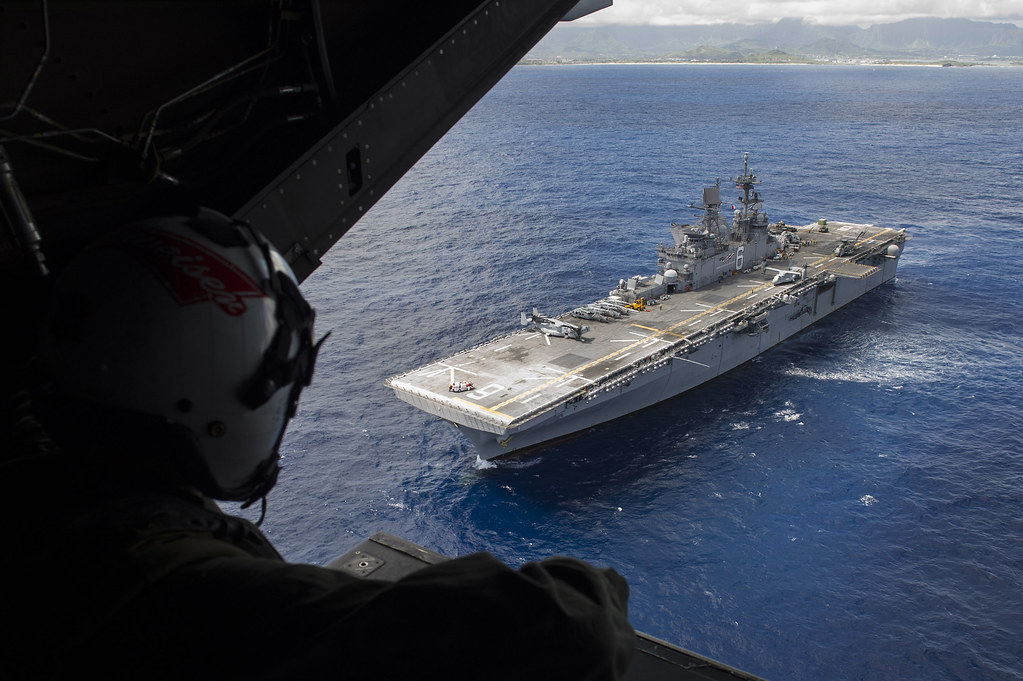
In a time when anti-ship missiles are dubbed ‘carrier killers’, the sinking of the USS America is a testament to the resilience of American aircraft carriers.

This Kitty Hawk-class supercarrier, commissioned in 1965 and serving with distinction for over three decades, met an extraordinary fate, providing the Navy with invaluable data to fortify future vessels against modern threats.

The saga of the USS America, CV-66, is both a tribute to past service and a beacon for future naval design.

Commissioned during the heat of the Cold War, the USS America demonstrated an exemplary service record that spanned multiple conflicts, from the Vietnam War to Operation Desert Storm.

The non-nuclear vessel, weighing in at 83,573 tons and carrying up to 79 aircraft, showcased the power of conventionally-powered carriers. Its defenses were robust, featuring advanced radars, sensors, surface-to-air missiles, and close-in weapon systems.

America’s formidable construction and operational history, however, were only part of her legacy. In a move that sparked debate and even resistance from veterans, the decommissioned carrier was selected for a groundbreaking experiment.

Her final mission was not one of combat but of controlled destruction—a live-fire test that would inform the survivability and design of future carriers.

On April 19, 2005, the USS America was towed from the Virginia coast to undergo a series of controlled explosions, both above and below the waterline. Over a span of nearly four weeks, the America withstood these orchestrated assaults.

Then, on May 14, 2005, the vessel was scuttled, descending to its final resting place 17,000 feet beneath the Atlantic Ocean, between Charleston, South Carolina, and Bermuda. The sinking marked the end of an era—no other Navy aircraft carrier had been permanently sunk since World War II.

The USS America’s sacrifice was not in vain. The data collected from the operation enhanced the Navy’s understanding of supercarrier durability.

Mechanical engineer Blake Horner captured the significance of the tests, “[T]he whole point of the tests was to make future carriers more survivable, as well as see how warships reacted to underwater explosion and damage. Clearly, after taking a beating for four weeks, they can survive a LOT due to just their sheer bulk.”

The insights gained from the sinking were directly applied to the design of new carrier classes, such as the Gerald R. Ford-class.

The Navy’s evaluators deduced that a double-hulled ship of the America’s size was incredibly difficult to sink, with missiles needing to penetrate deeply through multiple compartments to cause critical damage.

Despite the bittersweet sentiments that surrounded the USS America’s scuttling, her legacy endures.

The ship’s durability under siege provided invaluable lessons for the Navy, shaping the vessels that now carry forth the name of USS America—a LHA-6 amphibious assault ship, boasting improvements partly born from the lessons of her predecessor.
Relevant articles:
– USS America: This Badass Aircraft Carrier Could Not Sink (The Navy Tried), nationalinterest.org
– USS America: Why the Navy Failed to Sink Its Own Aircraft Carrier, The National Interest, Nov 26, 2023
– This Is The Only Photo Of A U.S. Navy Supercarrier Being Sunk (Updated), twz.com, Jul 16, 2019
– USS America: The Navy Aircraft Carrier the U.S. Navy Couldn’t Sink, The National Interest, Dec 16, 2023
